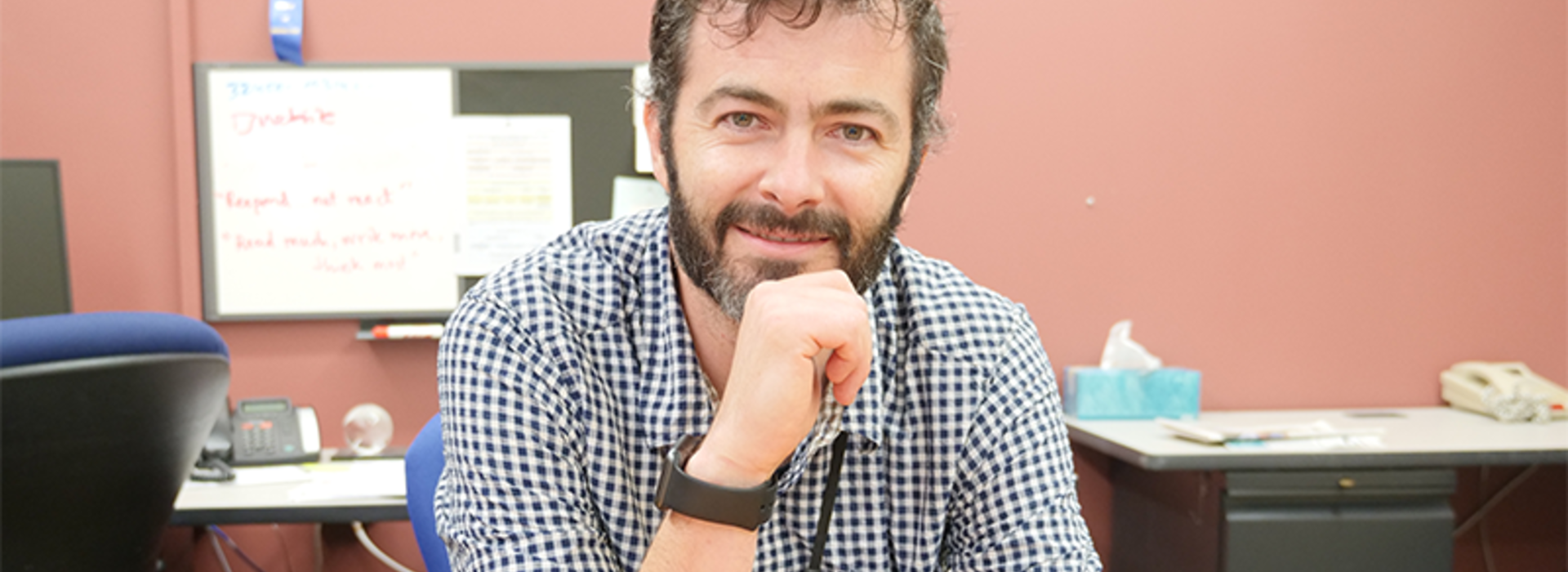
Faculty Spotlight: Dr. Ryan Kelly, MD
“Once you start withdrawing from an opiate, you are no longer yourself anymore. You need to get back to normal any means possible.”
Originally from Michigan, Ryan Kelly, MD came to the University of Minnesota Medical School for the Internal Medicine-Pediatric Program. Currently, Dr. Kelly is an Assistant Professor of Medicine in the Department of Medicine and an Internal Medicine Hospitalist at the Community and University Health Care Center (C.U.H.C.C.).
Dr. Kelly’s work helping people with opioid addiction took off two years ago after his clinic applied and received a Substance Abuse and Mental Health Services Administration (SAMHSA) grant for opioid addiction treatment.
“We received a grant to start a Suboxone clinic and Dr. Cuong Pham and I began treating patients with opiate use disorder, namely heroin addiction. At the same time, I started an Institutional Review Board (IRB) approved project to help patients who are admitted to the hospital for medical reasons with their opioid addiction.”
Specifically, Dr. Kelly has been working to identify patients admitted to the hospital with an opioid addiction so they are able to start addiction treatment during their hospital stay.
“The struggle is that if you don’t identify a patient with an addiction right away and start them on the proper medications they start withdrawing. This usually happens in the middle of the night and they are at risk of leaving the hospital due to untreated opioid withdrawal with a serious infection before anyone knows what’s going on.”
Dr. Kelly says his goal is to shorten the hospital stay of recovering addicts and if this isn’t possible, to bridge patients to chemical dependency treatment if interested after they are discharged; this includes following up at his clinic for maintenance treatment for opioid addiction.
Opioid Addiction and its Challenges
“Opioids are different because our brain makes an opioid, but after taking a drug for two to three weeks our brain stops making its own. For many people, that part of the brain doesn’t kick back in; it’s broken.”
To explain opioid addiction on the brain Dr. Kelly uses a metaphor, relating a brain on opioids to a thermometer. Kelly says when the brain is healthy, it sits at a perfect 70 degrees but after a person takes an opioid it spikes to 90 degrees.
However, after a while, the user’s brain will stop producing its own opioid, and the thermometer drops to 50 degrees. The user will now use drugs as an attempt to get back to normal..
“The challenge is if someone quits they’ll go through a week of terrible withdrawal. Most people can’t get past that,” says Kelly.
Kelly adds, this path often leads the user to heroin addiction, due to heroin’s availability and relatively low cost, compared to other opioids. If the opioid addiction doesn’t end in overdose, it will lead down other destructible paths.
“We need to offer to those struggling with addiction on the option of Suboxone, or Methadone while in the hospital if interested, and then get them to a clinic where they can continue their treatment.”
The Task Force on Opioids
In addition to his work in the hospital, Dr. Kelly is working with Minneapolis Mayor Jacob Frey’s Task Force on Opioids.
“The Task Force has several goals but one of them is to bring recommendations to the city council on how to best approach the opioid crisis.”
Subcommittees of the task force have been formed to address different realms of the opioid issue. Dr. Kelly is on a Community and Systems Integration committee, also referred to as CSI. The goal of CSI is to coordinate with different groups to increase access and break down barriers to treatment, and to decrease overdoses and infections from unsterile conditions that lead to hospitalizations, among other goals.
“Some of what we are doing is coordinating with healthcare systems to figure out ways to work together, identify the different silos, and determine how we can break them down.”
Although the task force was only recently started, the objective of their work is clear: stabilize the opioid epidemic.
“With the right support, decreasing deaths and enabling people to get help is something that I see happening in the future.”